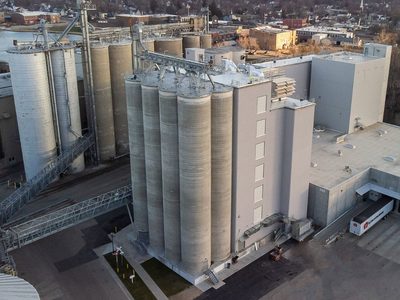“Global soybean markets advanced sharply in June, the IGC GOI sub-index rising by 13%,” the International Grains Council (IGC) said in its Grain Market Report in July. “U.S. futures were underpinned by firm export demand, partly linked to tighter than anticipated supplies at South American origins.”
However, gains were capped by profit taking and mostly favorable U.S. Midwest crop weather, but USDA’s end-June Acreage report was bullishly interpreted, it said.
“With basis levels underpinned by export demand, physical values at the U.S. Gulf rose by $53 to $468 fob,” the report said. “Against the backdrop of a solid pace of exports, together with continued firm demand from local processors, spot fob quotations in Brazil (Paranagua) climbed by 15% m/m to $483 fob. In Argentina, where the final stages of harvesting were aided by improved weather, offers were up by $42 to $454 fob (Up River).”
ICE canola futures softened since the last report, led by a 7% drop in the nearby (July) contract, the IGC said. “Initial mild gains – mostly tied to strength in soybeans – were later reversed under pressure from favorable crop conditions in Western Canada,” the IGC said. “Ideas that Statistics Canada might increase its forecast for 2016-17 plantings added to the negative tone. More recently, strong gains in soybeans also underpinned.”
In a report on the oilseeds market published on July 15, Jonathan Lane, trading director of Gleadell, a British trader jointly owned by Archer Daniels Midland and InVivo, noted concerns over the U.S. crop.
“U.S. soybean futures have ticked higher over the week on dryness concerns, with excessive heat appearing in the longer range forecasts,” he said. “With a tight balance sheet following crop losses in South America, a big U.S. harvest is needed. Any yield loss will cause a further tightness in supply.”
“MATIF rapeseed futures have been pulled higher in support of soybeans and canola,” he said. “The European harvest is yet to get under way and weather concerns (as yet unrealized) in the U.S. are affecting market sentiment.”
In its Oil Crops Outlook report, the USDA’s Economic Research service predicted that slowing soybean exports from Brazil will fuel a revival in U.S. sales.
Source: World Bank
“USDA forecast global soybean production for 2016-17 is up 2.25 million tonnes this month to 326 million,” the report said. “A higher U.S. soybean crop accounts for nearly all of the increase. In addition, an increase in 2016-17 sown area for Canada raised its forecast production by 200,000 tonnes to 6.25 million. This gain was completely offset by a lower Ukraine crop, where a lower sown area reduced forecast production to 4.3 million tonnes.
“For 2015-16, a lower yield trimmed USDA’s soybean production estimate for Brazil in June by 500,000 tonnes to 96.5 million,” it said. “The crop losses are restricting Brazil’s trade prospects. Exports of soybeans from Brazil peaked at 10.1 million tonnes in April, and have since fallen sharply to 7.7 million tonnes in June.”
Old-crop yield losses, strong demand, and limited expectations for an increase in new-crop area have pushed current soybean prices in Brazil close to an all-time high, the ERS said.
“A rising premium relative to U.S. prices has dramatically shortened current ship lineups at Brazilian ports. Thus, USDA lowered its 2015-16 forecast of Brazil soybean exports by 1.55 million tonnes in June to 57.2 million. This was partly offset by a forecast increase in Brazil’s soybean crush rate for 2015-16, which was raised 700,000 tonnes to 40.7 million.”
For rapeseed, a lower E.U. crop was offset by a smaller decline in Canadian area.
“Global rapeseed production for 2016-17 is forecast 389,000 tonnes higher this month to 66.5 million,” the ERS said. “For Canada, production is forecast 900,000 tonnes higher to 16.4 million, although lower than 2015-16 at 17.2 million. The increase is based on a higher sown area, as area gains in Saskatchewan have nearly offset declines in Alberta and Manitoba. Planting was completed in June and soil moisture conditions are good throughout the Prairies.
“Yet, this month’s gains for the Canadian crop only moderate the decline in total 2016-17 supplies, which are seen falling 2.1 million tonnes from last year. As a consequence, new-crop exports may be limited to 8.8 million tonnes (although up 250,000 from last month) from a revised 2015-16 forecast of 10 million tonnes.”
The better 2016-17 crop outlook for Canada is partially offset this month by a reduction for the E.U. rapeseed crop, forecast down 600,000 tonnes to 21.2 million.







